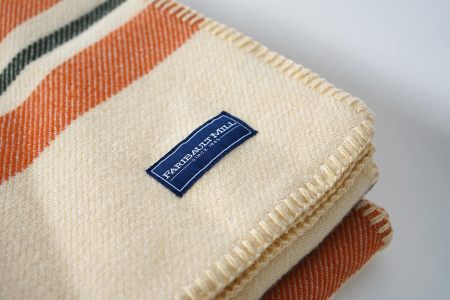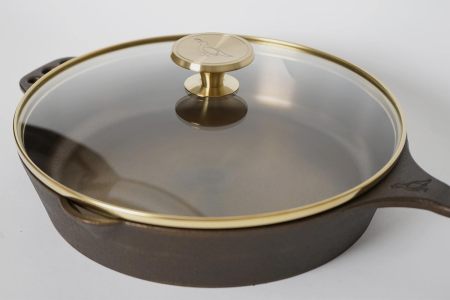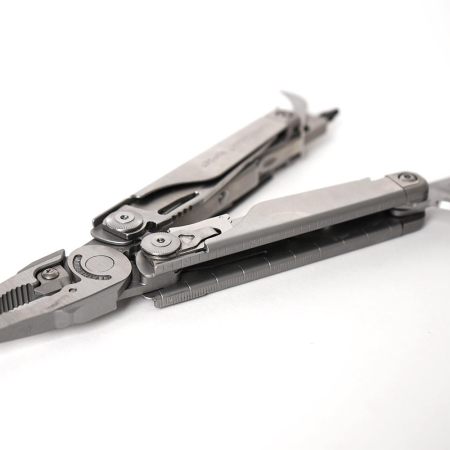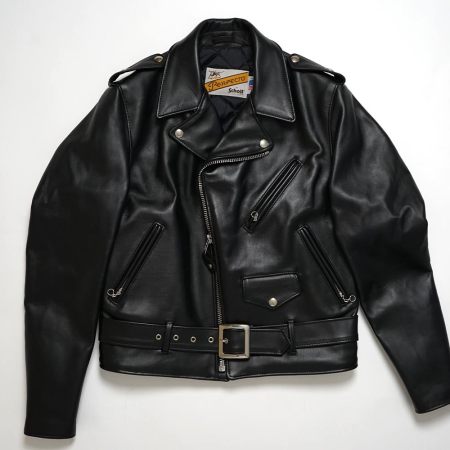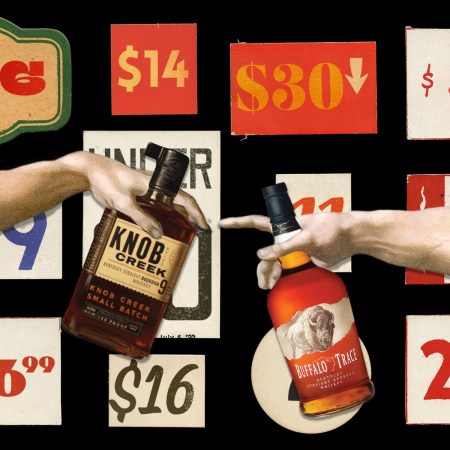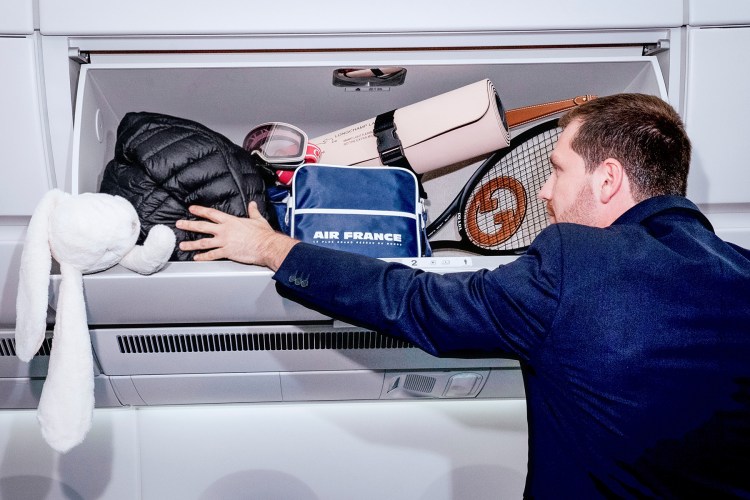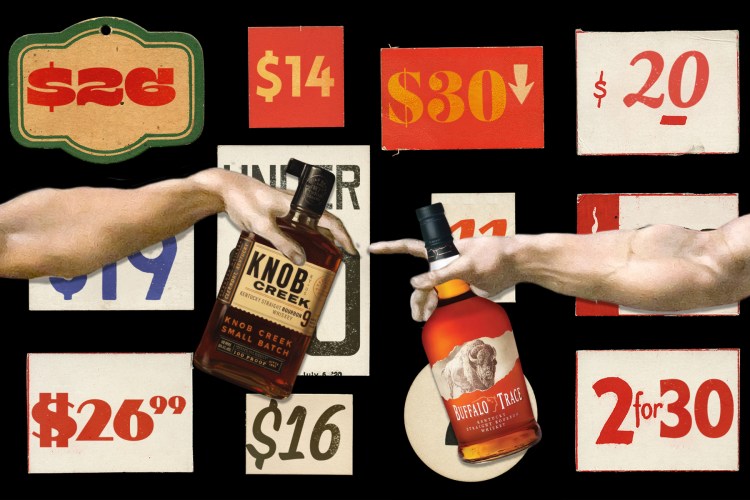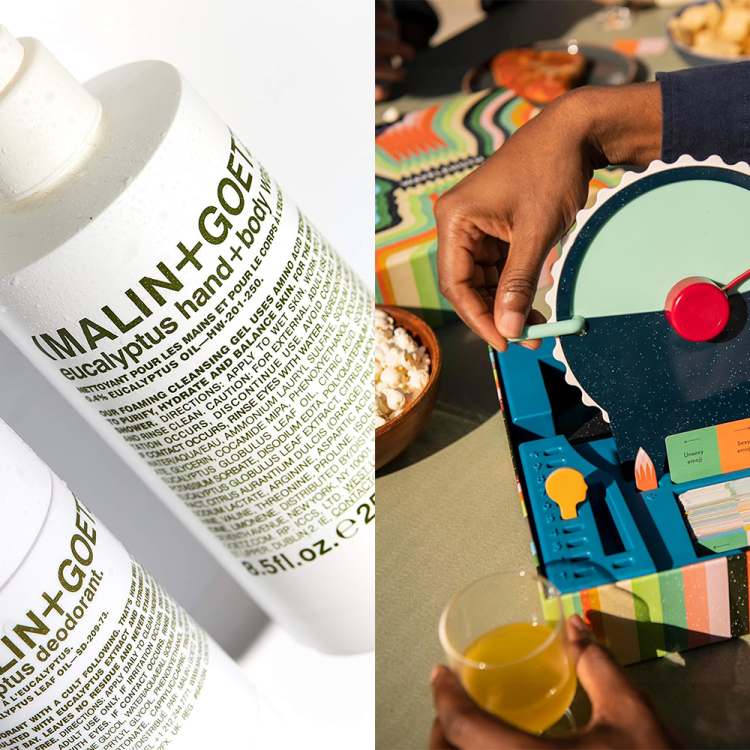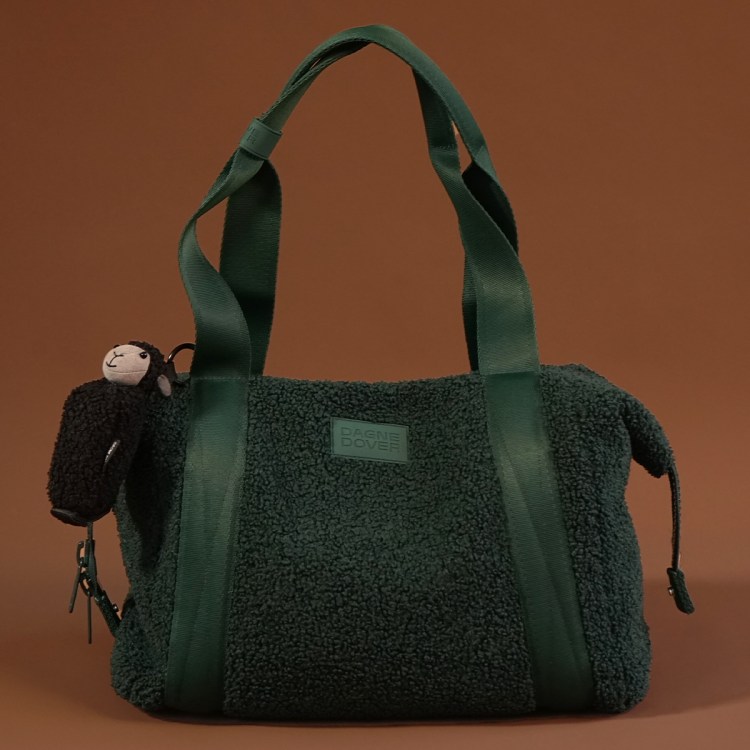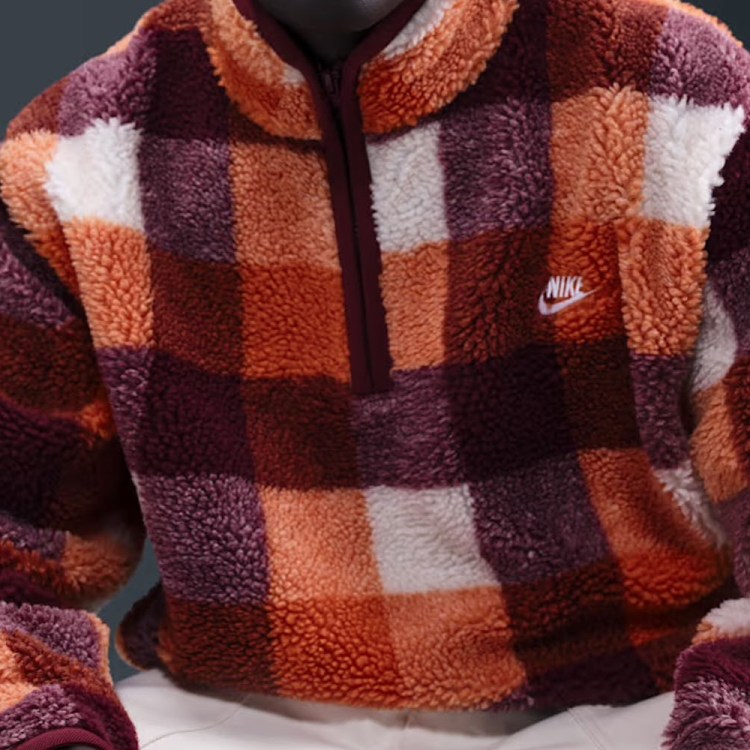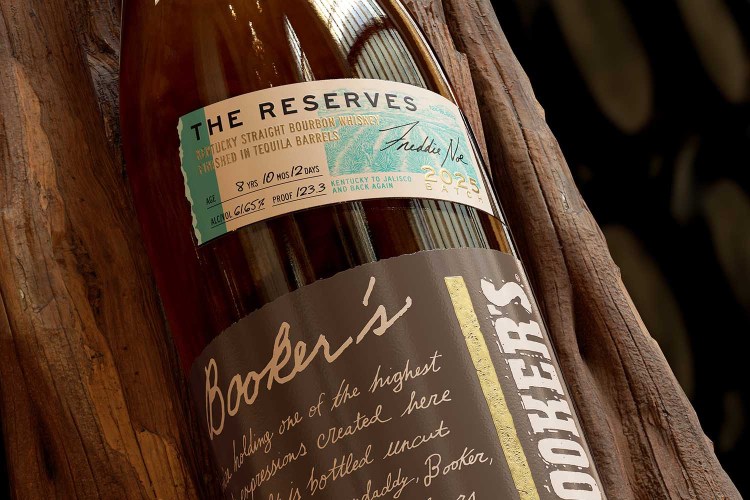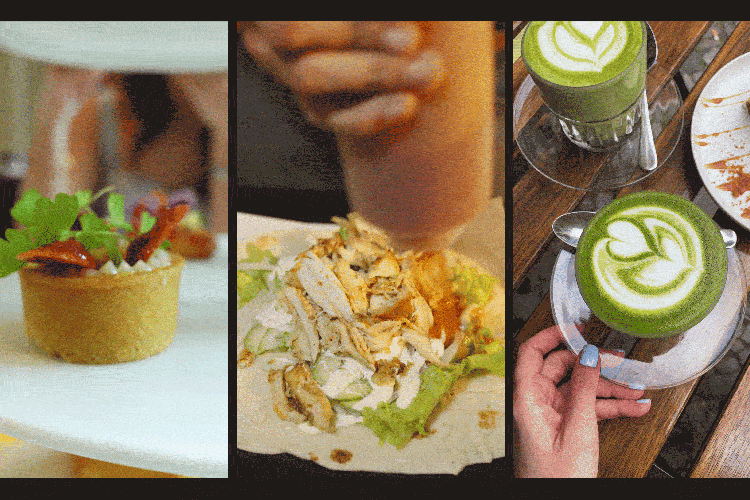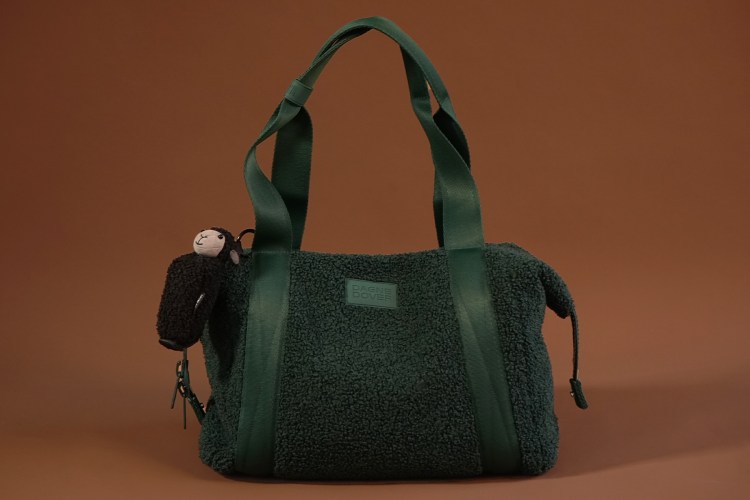There’s a lot of talk about American manufacturing these days. The loudest conversations in the last year have been centered around a few key products, like cars, smartphones and microchips. While these are critically important items — to you, to the country, to the global economy — they’re far from the whole picture. What about the U.S. factories that are dedicated to producing all the other goods that are essential to and enrich our daily lives, from furniture to cookware to shampoo?
To get a better picture of the state of making things in the States, we reached out to 10 different companies from our list of the 100 best American-made products. We covered a lot of ground, from volume producers to boutique makers who are based in states ranging from California to Tennessee to Minnesota. As in our roundup of domestic goods, the brands we’ve included here don’t all adhere to the Federal Trade Commission definition of “Made in U.S.A.” — some use 100% American labor and materials, others make their products here with some American parts and some sourced overseas. We think it’s important to include that full spectrum for a variety of reasons, but especially because some components and materials are simply not able to be sourced here.
As Ben Carter, the cofounder and CFO of U-Turn Audio told me, he gets things like motors and cables for his turntables from China because these parts just aren’t made in the U.S. “Maybe really high-end boutique stuff,” he admitted, “but not consumer level.” That is, not affordable. Still, the employees at their Massachusetts facility do some fabrication along with assembly and testing — and with that formula they’re able to offer what a number of outlets have dubbed the best budget turntables. That’s right, even better and more affordable than record players that are fully built and shipped from China.
Apart from U-Turn, we also spoke with one of the last vertically-integrated woolen mills in the country, which does indeed meet the FTC parameters, as well as a watchmaker attempting to revive that storied industry here in the U.S., a growing cookware powerhouse that built up its own domestic supply chain in order to make best-in-class ceramic pans here, and an innovative lighting brand that’s leveraging cutting-edge digital manufacturing in Silicon Valley.
Do these brands feel like they are part of “a new golden age” of American manufacturing, as President Donald Trump has promised? Or are the sweeping tariffs he’s imposed (and rescinded, and reimposed) having a counterproductive effect, whether directly or indirectly? From the consumer side, is the cultural sentiment around supporting domestic makers actually turning into sales, or are these companies still waiting to see the promised surge?
We asked these 10 companies the same slate of questions, some by phone and others by email, in order to get a sense of where things stand. Their answers will surprise you.
Answers have been edited and condensed for length and clarity. Additional reporting by Amanda Gabriele.

Rick Dow of Faribault Mill
Job title: Chief marketing and business development officer
Headquarters: Faribault, Minnesota
What they make: Blankets, bedding and other textile-based products
What does your American manufacturing footprint look like?
We have two facilities that are owned and operated by Faribault Mill in Minnesota and Maine. In addition, we work with a number of strategic and sourcing partners across the country who provide us with wool, cotton and other key supplies.
If you had to point to one American-made product that stands out among your line, what would it be?
Probably our Frontier Blanket. It’s a classic that has been in our lineup for over 100 years, and continues to be a best-seller to this day. It’s an iconic, simple design (which explains the appeal), and expertly made to last generations. And we now offer it in both wool and cotton, and as a throw, a bed blanket and in a number of accessories.
The general feeling is that it’s a good time to be making things in the U.S. What is the reality like for you so far this year?
Certainly it’s a good time for us to be 100% made in America. It allows us to control everything that goes into making our products. It’s been a challenge to stay competitive with offshore pricing, particularly when we’re working hard to create good-paying, small-town American jobs, but there seems to be a resurgence of consumers appreciating our brand, and the quality of the products we make, so that’s been a good thing for Faribault Mill.
What gives you hope about continuing to make your products in the U.S.?
We are so optimistic about our future. Not just because our brand is hot right now, but because we’ve worked very hard to create an ecosystem of made-in-America partners that ensures our quality will remain for another 160 years. And given our resurgence and the familial environment we’ve created in our manufacturing facilities, we have a lot of people knocking on our door asking to join the team. A steady workforce will be key for giving us continued hope.
We have a lot of people knocking on our door asking to join the team.
— Rick Dow
What are the biggest challenges you’re facing on that same front?
As always, it’s difficult to compete with competitors who source their blankets, throws, etc. in countries that pay pennies on the dollar to manufacture their products. We can’t compete with that. In addition, we’re still a small company, so we don’t have the marketing dollars to create campaigns that will educate millions on the quality of our products, the impact of buying American-made, etc. We have to be extremely clever and thoughtful about how we spend our limited marketing dollars.
Have recent tariffs impacted your business at all?
Thankfully it hasn’t negatively impacted us from a production perspective. Our ecosystem of American suppliers has allowed us to avoid being impacted greatly by the tariffs. However, reduced buying power by the broader public could pose an indirect issue for us trying to sell a premium product.
Have you made any price increases in 2025, or are you forecasting any coming soon?
We’re extremely proud to say that we’ve done the exact opposite. Due to our made-in-America ecosystem, as well as our continued growth, we announced recently that we were dropping prices on many of our best-sellers. Yes, it’ll pinch our margins a bit in the short-term, but we felt it was the right thing to do given the economic environment (plus, it’ll help us get our products into more hands…which is great for us).
Why a Faribault Blanket Is One of Our Favorite American-Made Products
Ross Widmoyer, CEO of the 159-year-old mill, walks us through the process of making the finest wool blanket in the countryIf you could change something about your industry to help your business thrive, what would it be?
A broader understanding of quality/lifetime value to help consumers overcome their addiction to cheaply-made products. We’ve studied our competitive space and determined that our blankets will last 15 to 20 times longer than many of our competitors’ products, so while we may be slightly more expensive on the front end, the lifetime value of our products is significantly better than cheaply-made ones.
Why is American manufacturing important to you?
Because we’re creating quality, generational, middle-class jobs that mean so much to our communities. And we’re making products that will stand the test of time.

Ben Carter of U-Turn Audio
Job title: Cofounder and CFO
Headquarters: Woburn, Massachusetts
What they make: Turntables, speakers, preamps and accessories
What does your American manufacturing footprint look like?
We have a facility in Woburn where we do all of our product assembly and testing, fulfillment, shipping, all that, and some amount of fabrication. But we work with suppliers both within the U.S. and internationally to get a lot of the parts that we use.
If you had to point to one American-made product that stands out among your line, what would it be?
I think our highest-level turntable, which is called Orbit Theory, is a really good candidate because it’s very nice and it’s won a bunch of awards, but it also has a high amount of U.S. content. There are a lot of specialized custom parts on it that we work with U.S. suppliers to produce. It’s hardwood construction, so American walnut, oak. There’s also an ebonized oak finish, which is something like no one else does. I mean, no other turntables are made out of hardwood. They’re all fiberboard with a wood veneer. And with Theory, it was named an honorable mention for Time‘s Best Inventions of 2023.
The general feeling is that it’s a good time to be making things in the U.S. What is the reality like for you so far this year?
Because we have a global supply chain, the tariffs are affecting us, especially on electronic components, which almost exclusively come from China — things like motors or power supplies or cables. This is stuff that everyone gets from China, it isn’t really made in the U.S. — maybe really high-end boutique stuff, but not consumer level. We’ve just been trying to navigate the cost increases and try and identify cost savings and maybe move some of our suppliers around. Luckily the turntable is mostly U.S. parts, so we’re not going to be hit as bad as someone who’s making stuff in China and just bringing it over. But it’s definitely affecting us, and the indirect effects of the tariffs on steel and aluminum, which are both materials we use a lot of in the turntable. It’s been tumultuous.
Have you made any price increases in 2025, or are you forecasting any coming soon?
We also do powered speakers, and those have a much higher Chinese content specifically than any of our other products. Because, again, with speakers, those are almost all made in China, all the drivers and the circuit boards. So we have had an increased pricing on that and we’re looking at options for doing it elsewhere.
The reality is what we’re doing with the speakers, where it’s importing a lot of Chinese components and assembling them here in the U.S., I don’t think that model makes so much sense anymore, which creates an incentive for companies like us to move all of the manufacturing out of the U.S., because you can’t get the parts anywhere except China. And if you assemble them in Mexico and bring them up, then you don’t have to pay the Chinese tariffs. It creates some strange situations that don’t necessarily incentivize American manufacturing.
Luckily the turntables are largely U.S. But listen, we get our parts where we can get the best parts. We have cartridges from a few different countries, but most of them come from Denmark because Ortofon makes really excellent cartridges. It’s hard to go out and get the best parts when there’s tariffs. It creates new constraints. It’s not like it’s cost-cutting — it’s because some of these overseas factories are very good at what they do.
Tariffing parts from other countries doesn’t necessarily help American manufacturing. It hurts a lot of American manufacturers. It does help some, but it’s totally uneven in the way it benefits some and hurts others.
— Ben Carter
What gives you hope about continuing to make your products in the U.S.?
I think we really need to lean into the craftsmanship and focus on some of the higher-end stuff because that’s where we can use a lot of American suppliers. We can have more labor costs, higher tolerances for our parts and do more — I don’t want to call it small batch — but almost more of a higher-end boutique business. Whereas we started as an entry-level company and we’re going to continue doing the entry-level stuff, but that’s become a lot harder. My concern is that turntables are going to become too expensive and the records are going to become too expensive and we’re just going to lose people from the hobby. And that’s, I think, the bigger threat, not just to us, but to everyone in this business.
What’s something people don’t understand about American manufacturing, specifically the industry you’re in?
I do think there’s a common misconception that companies go get parts overseas to drive down costs, or that parts from certain countries are poor quality. That’s not necessarily true. I mean, China’s ability to do cosmetic metal parts is unrivaled. It’s very hard to get the quality that comes out of China from anywhere at any price, which is wild.
People don’t really understand tariffs. They don’t understand it’s literally a bill that comes to you and you can pay it with a credit card. It is a tax that gets passed directly to consumers.
And I think most American manufacturers, certainly small businesses, do rely on international supply chains. Tariffing parts from other countries doesn’t necessarily help American manufacturing. It hurts a lot of American manufacturers. It does help some, but it’s totally uneven in the way it benefits some and hurts others
If you could change something about your industry to help your business thrive, what would it be?
I think either some relief from the tariffs or just relief from the amount of regulatory and compliance burden on small businesses. Now we have to navigate the tariff system and HTS [Harmonized Tariff Schedule] codes and all this highly technical stuff, but we also have to navigate California product safety law and internet privacy law and sales tax in 30 states and all of these things. We don’t have an accounting department. We don’t have a legal department. We’re just doing our best.
For a company of our size, all of the regulatory burden, it really makes it hard to do what we do best, which is create new products, bring them to market, support our existing products and sell turntables. I’d really like some more time to focus on that instead of being bogged down with all of this regulatory stuff. I bring it up because I’ve been doing this for 12 years now, basically since I graduated college, and it didn’t used to be like this. So things are changing, and it’s getting harder for small businesses in a lot of ways.
Why is American manufacturing important to you?
Where we’re located is the town over from where I grew up. We want to be part of the community, we enjoy contributing to the town, employing people in the area. It brings us a lot of pride. That’s why we continue to do it.

Jake Kalick of Made In
Job title: Cofounder and president
Headquarters: Austin, Texas
What they make: Cookware
What does your American manufacturing footprint look like?
I would say about 25% of the pans we make are made in the United States. We also have all of our grills made in the U.S. and we have a line of grill tools. We work with about 33 factories right now, four of which are in the U.S. It’s also worth noting that we started in the U.S. — our first factory was in Nashville.
If you had to point to one American-made product that stands out among your line, what would it be?
I think the CeramiClad is an interesting story, because it is made in Wisconsin. There are global components to it, a lot of the steel comes from overseas. But the reason why I think [this] is an interesting made-in-U.S. story is twofold: One, ceramic-coated cookware the last few years has been a story about health, transparency, what’s going into my home products; and what better way to ensure that process than actually doing it in your backyard?
The other thing…is we wanted to do ceramic cookware the Made In way. Ceramic cookware is historically not about performance. It’s less durable, lower performing, usually lower price point. And Made In is about chef quality, the product is going to last you, high performance, good results. In order to do that, we had to build the supply chain from the ground up and understand how to clad cookware and then spray ceramic coating on stainless clad cookware. In order to do that we needed to have that supply chain here. It took us a couple of years to build and figure out how to do it right.
The 100 Best American-Made Products
Celebrating the gear, clothes and goods that are the life’s work of our fellow AmericansThe general feeling is that it’s a good time to be making things in the U.S. What is the reality like for you so far this year?
The reality is it’s more expensive today to manufacture in the U.S. than it was six months ago, full stop. So while folks that have a U.S. supply chain might be ahead of the game as it relates to people globally, or American brands manufacturing globally, it’s still more expensive today than it was six months ago, because the reality is it’s very difficult to find a product that you can manufacture with 100% U.S. parts.
We’re paying hefty tariffs on the global components that go into some of the stuff we make here. And there’s a scale, like our grills are almost entirely U.S. components — I think there’s like a handle that isn’t. But our cookware, which we make a lot of pans here in the U.S., those are global components for a lot of that. So it’s more expensive, it’s difficult, but I think it is forcing us to build an even stronger, heftier, robust supply chain here in the U.S., and just getting us closer with our partners here. I think you take the good with the bad.
What gives you hope about continuing to make your products in the U.S.?
One thing that’s unique to what we do is in cookware, in kitchen supplies, there’s a really cool history of U.S. manufacturing. My family’s been in the restaurant supply business for 100 years selling other brands. There have been incredible cookware brands, plateware brands, glassware brands that were in the U.S., and they have kind of gone away. So I’m excited about the idea that we’re going to see a little bit of a renaissance, potentially, of some of these categories.
What are the biggest challenges you’re facing on that same front?
I think it’s kind of what a lot of people have pointed out, which is that the timelines don’t necessarily add up. I talked about the struggles we’ve had sourcing good clad cookware from America. The clatters were shutting down. The ones that were still open were providing far inferior product at a much higher price point with a higher scrap rate with much later timelines — nothing honestly redeeming about it. To start that process up again to make specialty clad cookware, specialty clad metal in the U.S., it’s not an overnight thing. It’s not an over-a-year thing. It’s not a three-year thing even. I think what a lot of people are struggling with is how to make the math work. Like, yes, we want to bring it all back now, or you’re incentivized to, but what’s the reality there?
It is challenging to find a robust workforce for a lot of these factories. I think we see in Italy, there’s a lot more of the population that want to work there in factories.
— Jake Kalick
Have you made any price increases in 2025, or are you forecasting any coming soon?
We took a price increase with the understanding that the tariffs were going to fundamentally change our business. We did not take price increases to the point of washing out tariffs. We’re taking a margin hit, our factories have been good partners to us in Europe and are taking a margin hit, and we did take a small price increase for customers in [certain] products.
If you could change something about your industry to help your business thrive, what would it be?
It is challenging to find a robust workforce for a lot of these factories. I think we see in Italy, there’s a lot more of the population that want to work there in factories. We would love to be able to run our factories two, three shifts a day and employ more people and get more people making cookware, but that’s a challenge.
Why is American manufacturing important to you?
We’re not just a retailer that orders finished pans and ships them to you and has a fancy website. We are very involved in manufacturing. We take a lot of pride in being part of our supply chains and working through issues. So it only makes sense that as much as we can do here in the States and as much time as we can spend in U.S. factories, we’ll do. I think our customers and our chef community appreciate that.

Cameron Weiss of Weiss Watch Company
Job title: Founder and master watchmaker
Headquarters: Nashville, Tennessee
What they make: Watches and accessories
What does your American manufacturing footprint look like?
We have invested over $5 million dollars in American manufacturing, with no outside investors. This isn’t for an assembly line, it is for machines and tooling to make components like screws, wheels, pinions, cases, crowns and precise repeatability of these precision components. We believe in the future of handcrafting mechanical watches in the U.S.
If you had to point to one American-made product that stands out among your line, what would it be?
Our American Issue Field Watch is very special. We manufacture so many components that are teeny tiny that go into it, including the movement. It’s a very specialized timepiece. It is not something we sell on our website, as it’s typically sold out and only offered to those on our waiting list. It’s a huge accomplishment and achievement for us.
The general feeling is that it’s a good time to be making things in the U.S. What is the reality like for you so far this year?
While it’s exciting that the interest in U.S. manufacturing is growing, the realities are so complex. The infrastructure, which we’ve been working on for 12 years and scaling responsibly, takes a lot of time, financial investment and effort.
What gives you hope about continuing to make your products in the U.S.?
What gives me hope is that reopening this conversation about what constitutes American-made leads to more chatter about what American-made really means. Where something is made is just a small part of the story. Who makes it and why they choose to make it is a much deeper and more compelling story to be told.
What are the biggest challenges you’re facing on that same front?
Hiring is a big challenge. There are not people in the U.S. receiving the education and training required for our manufacturing jobs or watchmaking roles. There is almost no knowledge base for manufacturing at this level of precision in this sub-micron micromechanical realm.
Hiring is a big challenge. There are not people in the U.S. receiving the education and training required for our manufacturing jobs or watchmaking roles.
— Cameron Weiss
Have recent tariffs impacted your business at all?
Tariffs have created volatility in sourcing materials and equipment. The machines we rely on are not manufactured in the U.S., and fluctuations impact our future plans directly. Not being able to act due to uncertainty in the future of the cost of doing business is a horrible thing for the U.S. economy.
Have you made any price increases in 2025, or are you forecasting any coming soon?
Yes, we have had to increase the pricing of our products in 2025 due to rising costs of raw materials, machining costs, consumable tooling and labor. Our overall goal is to preserve craftsmanship and integrity; to do that, we have to price our timepieces thoughtfully and sustainably.
What’s something people don’t understand about American manufacturing, specifically the industry you’re in?
Most people do not understand the true cost of what it takes to manufacture a timepiece in the U.S. There is so much more that goes into it aside from assembly; we are machining precision parts that have to be within microscopic tolerances. While we’ve received an influx of inquiries asking about OEM production, most people do not understand that manufacturing in the U.S. is not cheaper or even close to the same price as manufacturing watches overseas.
Why is American manufacturing important to you?
As a trained watchmaker and father, American manufacturing is important to me, and I believe in preserving the lost art of watchmaking. I am not cutting corners, and I am doing the work piece by piece to create a legacy that outlasts me.

Nora Schaper of HiBar
Job title: Cofounder and president
Headquarters: Minneapolis, Minnesota
What they make: Grooming products
What does your American manufacturing footprint look like?
HiBar formulates, manufactures and ships all of its products in-house at its own facility in Minneapolis. This hands-on approach allows us to maintain the highest standards of quality, sustainability and consistency across our entire product line — from our shampoo bars to our plastic-free deodorants and solid face wash bars.
If you had to point to one American-made product that stands out among your line, what would it be?
Our Volumize Shampoo Bar exemplifies everything HiBar stands for: plastic-free packaging, salon-quality results, and a sleek, modern design that elevates the personal care experience. It’s a customer favorite because it delivers performance and sustainability without compromise.
The general feeling is that it’s a good time to be making things in the U.S. What is the reality like for you so far this year?
So far, 2025 has been mixed. We’re proud to manufacture in the U.S., and our Minneapolis facility gives us control and agility. But supply-chain costs — particularly for imported components like our cardboard deodorant tubes — have increased due to tariffs, adding pressure to our operations.
What some people don’t understand about American manufacturing is that it’s not just about making something — it’s about making it well. In personal care especially, performance is everything.
— Nora Schaper
What gives you hope about continuing to make your products in the U.S.?
Our customers give us hope. They’re deeply invested in sustainability and quality — and they recognize the value of products that are made responsibly here at home. There’s a growing demand for mission-driven brands like HiBar that prioritize performance, clean ingredients and the planet.
What are the biggest challenges you’re facing on that same front?
Tariff-driven cost increases and global supply-chain uncertainties remain challenging, particularly for components we can’t source domestically. Additionally, navigating growth while maintaining our in-house production model requires constant investment in people and processes. To manufacture our products, we typically have to design and build equipment from scratch. For our Solid Oil Cleanser Bar, we designed and built a special heated production line all the way from the kettle to the pour spouts. We also invested in a conveyor system topped with an infrared heat source, which melts the bottoms so they stand upright. It’s a lot!
Have recent tariffs impacted your business at all?
While all our ingredients come from U.S.-based suppliers, some source internationally, so we’ve seen about a 3% increase in ingredient costs. Our imported cardboard deodorant tubes have also become significantly more expensive, putting added strain on our margins. We have yet to find a U.S. company that can make an oval, plastic-free deodorant tube, but that’s one of our goals.
What’s something people don’t understand about American manufacturing, specifically the industry you’re in?
What some people don’t understand about American manufacturing is that it’s not just about making something — it’s about making it well. In personal care especially, performance is everything. Consumers won’t compromise on results, and domestic manufacturing allows us to oversee every detail and deliver products that meet high expectations.
If you could change something about your industry to help your business thrive, what would it be?
We’d love to see better infrastructure and incentives for sustainable packaging innovation in the U.S. There’s huge consumer demand for plastic-free products, but the packaging options — especially biodegradable and compostable solutions — are still limited and costly domestically.
Why is American manufacturing important to you?
Making HiBar in the U.S. is fundamental to our commitment to beauty with integrity. And making our products in-house ensures that we’re upholding our environmental and quality standards every step of the way. And the smallest details matter — from water-activated tape box sealer to energy-efficient lights. It’s not just about reducing plastic waste, it’s about building a better, more transparent future for personal care.

Steph Anderson of Frost River
Job title: Vice president
Headquarters: Duluth, Minnesota
What they make: Canvas and leather bags and other heritage goods
What does your American manufacturing footprint look like?
We handcraft every Frost River item under one roof in Duluth. Our century-old building is fully outfitted for efficient production: the basement houses raw materials, CAD cutting tables and prep sewing machines; the upper level is where skilled sewists and finishers bring each bag to life. What’s truly unique is our ground-level retail space — customers can browse our waxed canvas goods while hearing the hum of machines, the pound of rivets and the rich scent of premium leather in the air. We employ 30 people and anticipate continued growth in both team size and business over the next two years.
If you had to point to one American-made product that stands out among your line, what would it be?
The Explorer Duffel is a standout in our collection, thanks to its unmatched durability. Like all our designs, it incorporates construction techniques from our foundational Canoe Packs — double-layer bases, sewn and riveted leather components, and tough waxed canvas sourced from a fourth-generation mill in New Jersey. Our leather is sourced from SB Foot Tannery in Red Wing, MN, and solid brass hardware adds a polished look and extra reliability. It’s the bag you want to throw in the back of a truck or bring on a flight. (And for that, I always opt for the version with stowable backpack straps, the Explorer Duffel ESB — my go-to travel pick.)
We haven’t seen a huge surge in interest for made in the U.S.A. products this year, but we’re hopeful that fresh eyes will find us through the growing support for domestic manufacturing.
— Steph Anderson
The general feeling is that it’s a good time to be making things in the U.S. What is the reality like for you so far this year?
We’ve always been committed to American manufacturing. But it’s not just about making our goods here — it’s about supporting other U.S.-based makers too. Everything we carry in our shop is made in the U.S.A., which is no easy feat when it comes to clothing and outdoor gear. That said, we haven’t seen a huge surge in interest for made in the U.S.A. products this year, but we’re hopeful that fresh eyes will find us through the growing support for domestic manufacturing.
What are the biggest challenges you’re facing in terms of making things here?
Finding skilled sewing technicians continues to be a challenge. To address it, we’ve taken on contract manufacturing projects that help us train and grow the skills of newer sewists who may not have industrial sewing experience — building up talent from within.
Have recent tariffs impacted your business at all?
Our international retail partner channel is the strongest division of our wholesale business, so the recent tariffs have been tough. There’s been a lot of confusion — unclear rates, shifting dates — which has shaken the confidence of our international buyers. It’s been hard to navigate, especially since much of it is completely out of our hands.
What’s something people don’t understand about American manufacturing, specifically the industry you’re in?
Some customers are surprised by our pricing when comparing us to other waxed canvas bags made overseas. We price our goods as fairly as possible and invite customers to compare us with other U.S.-made brands — they’ll find we’re quite competitive. Plus, we offer a lifetime guarantee on our craftsmanship, which we can only do by building bags with the best materials and construction methods available. A big part of our pricing also ensures we can offer competitive wages and strong benefits to our employees.
How Brant & Cochran Brought Axe-Making Back to Maine
Mark Ferguson tells the story behind the gorgeous workhorse that is the Allagash Cruiser, which includes blood, sweat, tears and a downer of a pizza partyIf you could change something about your industry to help your business thrive, what would it be?
We’ve become a bit of a niche in the outdoor industry — our bags aren’t ultralight or overly technical. And while we can do more to reach the right customers, I wish more media outlets would look beyond the major brands and highlight smaller, heritage-focused makers like us. We’re not churning out new product versions every year. We believe in doing it right the first time and creating something that will last for decades.
Why is American manufacturing important to you?
We’re a heritage brand in every sense — we’ve got riveting machines from the WWII era still in use. We honor traditional craftsmanship while investing in modern tools like automated cutting tables to stay efficient and sustainable. Making everything in-house means we can improve our processes, reduce waste and even partner with local organizations to upcycle materials. For us, it’s about building things with our hands and keeping that legacy alive from the place that we love the most.

Ian Yang of Gantri
Job title: Founder and CEO
Headquarters: San Francisco, California
What they make: Lighting
What does your American manufacturing footprint look like?
We built and operate our Digital Factory 01 in the Bay Area — a 25,000-square-foot facility with 25 workers. Opened in 2021, it’s the world’s first factory that leverages digital manufacturing technologies to produce high-quality, sustainable lighting on-demand at mass production scale.
If you had to point to one American-made product that stands out among your line, what would it be?
All of our 5,000+ lighting SKUs are made at our Digital Factory. Each product is created by an independent artist, designer or design brand, and represents our vision for the future of design — artistic, functional, sustainable and accessible. Producing this variety on a single line shows how transformative digital manufacturing is for producing lighting and underscores our commitment to software-driven innovation rooted in Silicon Valley.
With new waves of technology and innovation in automation, software and AI, I believe manufacturing in the U.S. will look very different from what already exists.
— Ian Yang
The general feeling is that it’s a good time to be making things in the U.S. What is the reality like for you so far this year?
We’ve committed to local manufacturing since Gantri started in 2016. We believe it’s key to a diverse economy, vibrant communities and a healthier planet. We’re excited that so many people now share this vision. To take it one step further, we’ve recently launched Gantri Made, a platform that provides access to brands and designers to our digital manufacturing process, making it speedier, more cost efficient and sustainable to easily create and scale high-quality products without the high costs, long timelines and complexities of traditional manufacturing.
What’s something people don’t understand about American manufacturing, specifically the industry you’re in?
There’s a common belief that American manufacturing simply means replicating overseas methods onshore. But with new waves of technology and innovation in automation, software and AI, I believe manufacturing in the U.S. will look very different from what already exists. This will create exciting opportunities for new products and new communities to emerge.
If you could change something about your industry to help your business thrive, what would it be?
A renewed sense of possibility. The furniture industry has long been held back by the complexity and rigidity of mass production and global supply chains. I hope our mission to build digital manufacturing technologies that lower the barriers to creation will spark creativity across the industry, allowing more unique products to come to life.
Why is American manufacturing important to you?
We believe in the American spirit of big dreams, hard work and innovation. Building Gantri in the heart of Silicon Valley has shaped our approach and pushed us to think bigger.

John Edelman of Heller Furniture
Job title: CEO
Headquarters: Westport, Connecticut
What they make: Furniture
What does your American manufacturing footprint look like?
We outsource manufacturing and we use a super industrial mode of manufacturing. It’s called rotational molding and/or injection molding. The machine that makes, as an example, the Fortune Chair, which is a very complicated design, you can make the product using the mold anywhere in the world. We make it in Wisconsin. What’s interesting is the machine that makes this chair an hour before might make highway boundary things or underground water tanks or fake rocks. [Heller Furniture founder] Alan Heller’s idea was like, these machines are so stupid, they can make anything — let’s let them make something beautiful.
If you had to point to one American-made product that stands out among your line, what would it be?
I think for all of our new production, I can point to something very specific about made in America, which is recycling. America, you know, is not very good at recycling. So how do you leverage what the capabilities are in the United States to do the right thing for the world?
One, since it’s hard to find consistent recycled product in the same color every single time, we found a way to use the strips of plastic that separate America’s fields, the crops, and those strips of plastic are all the same color. So we use post-agricultural waste in the mix, which is very, very American. I mean, it’s an issue that we created. We can solve it.
Number two, we found an American company called Worry Free Plastics that has invented an additive based on the concepts of how they clean oil spills with enzymes. We put a small additive in our mix, and if our product ever ends up in a landfill or under the ocean for five years or more, the enzyme that’s been added will emit a pheromone and attract microbes that actually eat the product and poop out nutrient-rich soil. So it’s an American company, it’s an American technology and in furniture it’s unique to us.
The general feeling is that it’s a good time to be making things in the U.S. What is the reality like for you so far this year?
I’ve never had a time when it wasn’t great to be working in the United States to produce and sell in this country. I’ve never run a company like Ford that has to deal with macro trends and this and that. We’re small enough to disregard any macro trends and try to take advantage of what we do better than anybody else. So yes, we’re in the worst housing market in 35 years and that should be bad for furniture; we’re small enough that we just do a better job and still grow in a down housing market. So for us, it’s a good time.
What gives you hope about continuing to make your products in the U.S.?
Our Superman, our superhero, our driving force is great design. I have to believe in my heart that great design will always overcome temporary obstacles.
What are the biggest challenges you’re facing on that same front?
The housing market needs to improve. Interest rates need to come down in order to loosen up the housing market. That’s just a fact. I worry about tariffs on foreign goods having a toll on the American consumer and just having them have less disposable income. Those are things that keep me awake at night.
Have recent tariffs impacted your business at all?
Regarding my made in America business, not yet. I would say if we do see any events from tariffs on foreign goods boosting our sales, we’ll start to see that in the next 90 days because people have to go through inventories first. I believe it makes us more competitive. But again, we’re high design, so if they don’t like your product, it doesn’t matter what the tariffs are.
Have you made any price increases in 2025, or are you forecasting any coming soon?
I had one product I import from China I increased a little bit just because I had to. But in terms of domestic-material supply, we’ve been good. And we’re not a company that says, oh, everybody’s raising prices, let’s raise ours. When we launched a sustainability initiative April 1, it didn’t raise prices, although it cost us more, because we don’t believe the consumer will pay more for sustainability. But if they’re given the option at the same price, they’ll choose sustainability. And we need to scream, yell, Instagram, hang flags, everything talking about sustainability. It’s up to the consumers and the manufacturers to stand for it — the government’s not going to do that. So we’re standing on that pillar of the business. Great design, but always sustainable. You’re doing well by doing good.
I worry about tariffs on foreign goods having a toll on the American consumer and just having them have less disposable income. Those are things that keep me awake at night.
— John Edelman
What’s something people don’t understand about American manufacturing, specifically the industry you’re in?
Design. In the furniture world, I stand for authentic, modern design. When [people] see our overall vibe and our aesthetic, they’re like, American? Of course. This was designed in Brooklyn, made in Wisconsin, and it looks like it was cutting-edge Milanese. The Anna Dawson Swell is a student project from Rhode Island School of Design that became our number-one unit driver.
So design is alive. You know, furniture design was reborn in America during the last Great Recession. It was really born in Brooklyn and L.A., when the jobs at Gensler and HLK and all these huge firms weren’t available, and necessity breeds invention. You got this amazing upswing in American design, and it’s just thrilling. We’re tapped into that community, and they are intelligent, educated and creative. They’re really, really special.
I have a new chaise for spring that was designed in Brooklyn that’s going to be, I think, in museum collections. It’s thrilling to see, because it’s not just American manufacturing, right? Ideally, you want to design in America because you’re getting better designs. And for years, you had to go to Italy or Europe to get cutting-edge design. It’s here. It’s here now.
If you could change something about your industry to help your business thrive, what would it be?
I would try to increase the level of specified products for the hospitality industry to be made in the U.S.A. and sustainable. I think if you go price driven, you probably won’t specify made in the U.S.A. But if you look at sustainability, quality, durability and longevity, you will.
When you go through an airport and you see all those chairs or knockoffs at some table, that is the worst thing for the environment. It’s the worst thing for our country. Will the tariffs take care of that? I don’t know. Those are the worst factories in the world. They’re just like, find a way to lower the cost. The tariffs aren’t going to stop them. It’s the specification that will stop them and the purchasing. I’m the president of Be Original Americas. I stand for authenticity in every single aspect of what I do. Authenticity has to come first, and Americans have to be educated and understand to fight for authenticity in design. If you copy things, we can’t afford to launch the next product. You’re taking the food out of the designer’s mouth.
Why is American manufacturing important to you?
I think it’s important now, not because the government said it is, and not because of tariffs. I believe we live in an amazing society, one of the most incredible countries in the world. So if you can leverage the energy, the design acumen and the industrial facilities that we have, make product here. Why are you killing the world? Why do you have to put something on a container for 45 days and buy more than you need, because you have to fill a container? If you can buy to order and make a quality product at a similar price, do it. It doesn’t make sense not to. That’s the founding principles of Heller: If you can make it well here, it’s the best place in the world to do it. And if it’s not the best place in the world to do it, let’s find a way that it is.

Ron Khormaei of Steelport Knife Co.
Job title: CEO and founder
Headquarters: Portland, Oregon
What they make: Kitchen knives and accessories
What does your American manufacturing footprint look like?
Steelport is a small employee-owned team of artisans based in Portland, Oregon. We have about 12 team members who work at our factory where we complete most of the 135 steps in our process of handcrafting our heirloom-quality kitchen knives. We also have an R&D forge and heat treatment in North Portland where we develop new products and processes in smaller test batches.
If you had to point to one American-made product that stands out among your line, what would it be?
Our 8” Chef Knife is our original and still most popular knife. This, like all of our offerings, is fully American-made using U.S.-sourced materials. When we launched Steelport in 2021, nearly all cutlery in the marketplace was mass-produced overseas. Meanwhile, we knew there were incredible knives being traditionally forged and locally made by independent craftspeople, but only on a very small inaccessible scale. We started with a goal of reintroducing a premium American-forged kitchen knife that was actually accessible.
The general feeling is that it’s a good time to be making things in the U.S. What is the reality like for you so far this year?
We have always felt strongly about making our heirloom-quality products here in the U.S. That commitment has never wavered. During the height of the pandemic, when many companies faced massive supply-chain disruptions, our production never slowed down. Because all of our materials — even our packaging — are sourced domestically, we were able to continue delivering consistent quality without compromise. That said, like everyone else, we’re seeing rising costs across the board.
We started getting order cancellations from some international retailers — some explicitly saying they were avoiding U.S.-made products because of the geopolitical climate.
— Ron Khormaei
What are the biggest challenges you’re facing in terms of making things here?
A large barrier remains the customer’s understanding of the value provided. With the proliferating sophisticated marketing technologies, customers are getting bombarded with half-truths and slogans. So it becomes convenient to just select the lowest-cost products or brands with the biggest marketing budgets.
As an example, our latest offering is an innovative cutting board that introduces a true dual-sided functionality and the thinnest end grain available through our innovative patent-pending SteelCore process. It is entirely made in Portland with U.S.-sourced material, and is the first major innovation in cutting-board technology in about a century. But when communicating this information to customers, we are competing with brands spending a huge amount on flashy paid ads with dubious claims of innovation, and even misleading marketing about being U.S.-made (for example, when a U.S.-based brand does 99% of manufacturing overseas). All of this tires potential customers, creating a sense of overwhelm and mistrust in the industry.
Have recent tariffs impacted your business at all?
Even though we source all our materials domestically, the tariffs still impacted us. Right before the steel tariffs were even officially implemented, our U.S. steel supplier raised prices by 10%, likely anticipating increased demand. On top of that, we started getting order cancellations from some international retailers — some explicitly saying they were avoiding U.S.-made products because of the geopolitical climate. It has been an unexpected challenge, especially when we’re trying to represent the best of American craftsmanship abroad. We’ve since shifted focus to strengthening domestic sales and increasing focus on our new product development.
Why I Recommend Smithey Skillets More Than Any Other Cast Iron
Founder Isaac Morton started as a cast-iron collector. Now he’s making the next generation of heirloom-quality cookware.If you could change something about your industry to help your business thrive, what would it be?
It would be highlighting that quality cutlery can be made here. I’d shift the perception that the best kitchen knives have to come from Japan or Germany. Those countries absolutely have rich knife-making traditions, and they’ve earned their reputations, but that global spotlight has left very little room for American-made cutlery to even be considered.
Why is American manufacturing important to you?
When you manufacture locally, you’re not just creating a product — you’re building a community. You’re supporting skilled jobs, keeping craftsmanship alive, and showing that the U.S. is still a place where world-class quality is possible.

Brian King of Loll Designs
Job title: Brand and marketing director
Headquarters: Duluth, Minnesota
What they make: Outdoor furniture
What does your American manufacturing footprint look like?
American manufacturing is 100% of our footprint. We’ve been made in the U.S.A. since the company was founded and have worked to maintain 99% of our raw materials made in the U.S.A. too.
If you had to point to one American-made product that stands out among your line, what would it be?
It’s our Adirondack Chair. We designed the first-ever modern Adirondack chair in the mid-2000s as a way to repurpose waste material from our previous made-in-the-U.S.A. company, TrueRide, a municipal skate park design and manufacturing company. People immediately loved the modern look and feel, along with the reuse of materials — it’s still one of our customers’ favorites today.
The general feeling is that it’s a good time to be making things in the U.S. What is the reality like for you so far this year?
For us, it’s always a great time to be making things in the U.S.A. This is in our ethos. We’ve always been made in Duluth, Minnesota, so you could say we’re ahead (way ahead) of the curve.
We have over 100 people working at our factory — this allows them to support their families.
— Brian King
What are the biggest challenges you’re facing in terms of making things here?
More of our suppliers will likely be fielding inquiries from more brands who are just now trying to pivot to manufacturing in the U.S., with a possibility of price increases or delays. That being said, we’re fortunate to have the long-term and dedicated partners we have to work with us through this.
Have recent tariffs impacted your business at all?
Because we’re made in the U.S. from U.S.-sourced materials, we have not nearly had the same impacts as other brands may have. Though we’ll still be subject to the rising inflation costs of goods and raw materials, of course.
What’s something people don’t understand about American manufacturing, specifically the industry you’re in?
Making products in the U.S. supports local economies. We have over 100 people working at our factory — this allows them to support their families.
If you could change something about your industry to help your business thrive, what would it be?
To increase the value of original, well-made designs and discourage dupes and the fast furniture culture that goes with this.
Why is American manufacturing important to you?
It’s one thing to design a piece of furniture, but it’s another to create and craft that design. Having all of that in one building is truly special.
This article appeared in an InsideHook newsletter. Sign up for free to get more on travel, wellness, style, drinking, and culture.

